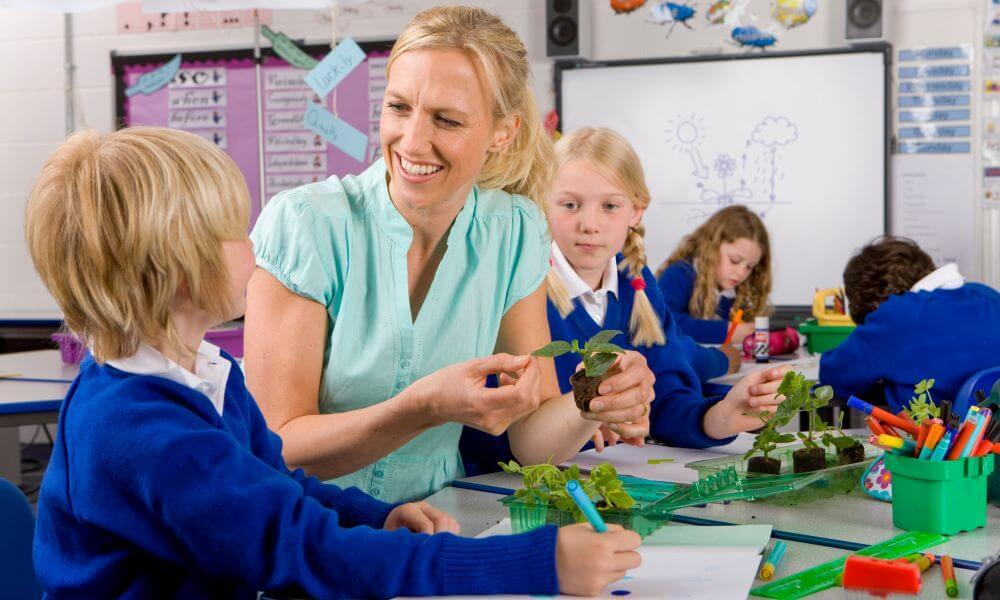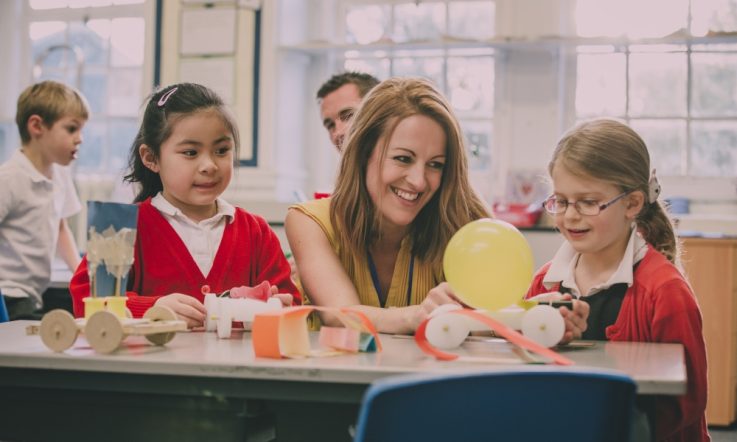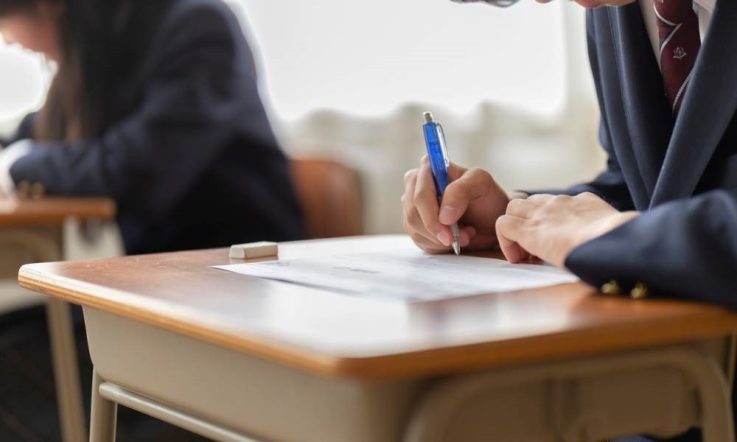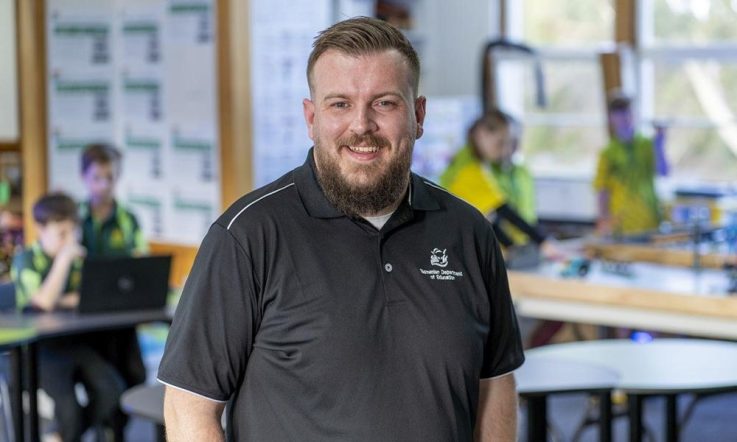Australia’s year 4 students have achieved the country’s best-ever result in a major international mathematics and science assessment, overcoming the challenges and disruption of pandemic learning in the early years of their schooling.
The 2023 Trends in International Mathematics and Science Study (TIMSS) involved more than 650,000 year 4 and year 8 students worldwide, including a representative sample of 13,912 students from 559 Australian schools.
The Australian Council for Educational Research (ACER) today released a report (Wernert et al., 2024a) on behalf of the Commonwealth, state and territory governments, analysing data from the eighth cycle of TIMSS, and there is plenty for students, their families, and teachers to be proud of.
In science, Australia’s year 4s performed in the top 10 of 58 countries that took part at this year level. The mean score of 550 was significantly higher than the 533 points achieved in TIMSS 2019, and ACER notes the average Australian year 4 student ‘moved from being able to apply knowledge using only a few scientific concepts to being a high performer in 2023’.
Student performance has also improved in year 4 maths since 2019. The number of countries outperforming Australian students dropped from 22 to 14, and the mean score increased from 516 to 525 points – another all-time high for Australia, which has participated in every TIMSS cycle since the assessment’s launch in 1995.
Australia’s mean score in each TIMSS cycle, by year level and subject.
‘These are really positive results for our year 4 students, particularly since their first years of school were disrupted by COVID-19,’ lead author of the ACER report Nicole Wernert said. ‘It also reflects well on teachers and parents that young students were so engaged with their learning in challenging circumstances.’
In year 8, Australia’s students achieved at similar levels to previous years. In 2023 they were outperformed by 8 countries in maths and 7 countries in science, out of 44 at this year level.
Although there is much to be proud of, the TIMSS 2023 results leave room for improvement, with Wernert highlighting a ‘disappointing’ gender gap in favour of boys’ achievement across both year levels and domains. Internationally, Australia recorded the equal widest gender gap (with France) in year 4 maths achievement.
Australia’s results in an international context
The International Association for the Evaluation of Educational Achievement (IEA), which directs TIMSS globally, says the 2023 data show substantial percentages of year 4 and 8 students across participating countries ‘demonstrated at least basic knowledge and skills in mathematics and science’.
Singapore was once again the highest performing country in both mathematics and science, at year 4 and year 8. Australia’s performance was higher than the TIMSS international average in both subjects, for both year levels.
Number of countries performing at a higher, similar and lower level than Australia in TIMSS 2023.
In year 4 mathematics: Singapore achieved a mean score of 615 points (a 10-point decrease from 2019). Other countries in the top 5 were: Chinese Taipei (607 points), Hong Kong and Korea (both 594 points), and Japan (591 points). Australia scored 525 points (up from 516 in 2019), and the TIMSS international average was 503.
In year 4 science: Singapore topped the list of participating countries with 607 points (up from 595 in 2019); the rest of the top 5 were Korea (583), Chinese Taipei (573) Türkiye (570) and England (556). Australia had a mean score of 550 points (up from 533 in 2019), and the international average was 494.
In year 8 mathematics: Singapore was the top-performing country with 605 points (down from 616 in the previous assessment cycle), followed by Chinese Taipei (602), Korea (596), Japan (595) and Hong Kong (575). Australia scored 509 points (compared to 517 in 2019), and the international average was 478.
In year 8 science: Singapore scored 606 points (slightly down on the 608 achieved by its students in the last TIMSS cycle), followed by Chinese Taipei (572), Japan (557), Korea (545), England and Finland (both 531). Australia scored 520 points (compared to 528 in 2019), and the international average was 478.
A closer look at Australia’s performance
ACER says a recent focus on promoting STEM in the early years, and on reducing maths anxiety, may be contributing to better results in year 4. The performance gains for this year level also appear to be mainly due to the increases in the proportion of very high performers. In year 4, from TIMSS 2019 to 2023 the percentage of very high performers for Australia increased by 3 percentage points in maths and 6 percentage points in science.
In TIMSS, very low performers are those scoring below the Low international benchmark (400 points), and very high performers are those scoring at the Advanced international benchmark (higher than 625 points).
There is also an Intermediate international benchmark (475 points on the TIMSS scale) – taken as the National Proficient Standard (NPS) in Australian reporting. The NPS represents a ‘challenging but reasonable’ expectation of student achievement. Analysis of the Australian data reveals the proportion of students below this expectation grows over the years of schooling. In year 4, 28% of students fail to reach the NPS in mathematics, and this grows to 36% in year 8. For science, 17% fail to reach the NPS in year 4, increasing to 30% in year 8.
The OECD Programme for International Student Assessment (PISA), which tests 15-year-olds (who are mostly in year 10), shows even larger proportions of Australian students are below our desired standard.
Here's an overview of Australia’s TIMSS 2023 performance for a selection of demographic groups.
In year 4 mathematics
- Male students outperformed female students by 23 points, and also outperformed female students in the proportions who attained the NPS and the percentages of very high and very low performers.
- First Nations students scored an average of 462 points on and 45% achieved the NPS.
- 75% of students who attended schools in major cities achieved the NPS, compared to 64% who attended schools in regional areas.
In year 4 science
- Male students outperformed female students by 10 points, and also outperformed female students in the proportion of very high performers.
- First Nations students scored an average of 499 points and 63% achieved the NPS – the average score has improved by 50 points since 1995, narrowing the gap with non-First Nations students from 76 points to 59 points in 2023.
- Students who attended schools in major cities scored 16 points higher than students who attended schools in regional areas.
In year 8 mathematics
- Male students outperformed female students by 13 points, and also outperformed female students in terms of the proportions who achieved the NPS and the percentage of very high performers.
- First Nations students scored an average of 435 points and 33% achieved the NPS.
- 67% of students who attended schools in major cities achieved the NPS, compared to 55% who attended schools in regional areas.
In year 8 science
- Male students outperformed female students by 13 points and in the percentage of very high performers.
- First Nations students scored an average of 451 points and 44% achieved the NPS.
- 72% of students who attended schools in major cities, compared to 64% who attended schools in regional areas, achieved the NPS.
Stay tuned for more articles, infographics, podcasts and videos over the coming months as we unpack the TIMSS 2023 results and share insights for your own context and classroom practice. On Friday, our infographic gives a snapshot of Australia’s performance internationally, and next week Nicole Wernert – ACER Senior Research Fellow and lead author of the TIMSS 2023 Australia Volume I report – joins Teacher for an expert Q&A.
References
Wernert, S., Schmid, M., & Rodrigues, S. (2024a). TIMSS 2023 Australia. Volume I: Student performance. Australian Council for Educational Research. https://doi.org/10.37517/978-1-74286-755-7
Wernert, N., Schmid, M., & Rodrigues, S. (2024b). TIMSS 2023 Australia: Highlights on Australian student performance. Australian Council for Educational Research. https://doi.org/10.37517/978-1-74286-757-1
TIMSS is directed by the International Association for the Evaluation of Educational Achievement (IEA). ACER manages the implementation and reporting of TIMSS in Australia on behalf of the Commonwealth, state and territory governments. To find out more about Australia's performance in TIMSS and access all the reports and data from this and previous cycles visit https://www.acer.org/au/timss



